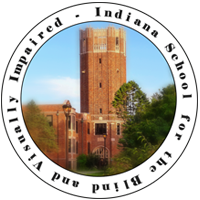Enrollment: Joining Our School Community
At the Indiana School for the Blind and Visually Impaired (ISBVI), we are dedicated to providing a supportive, specialized learning environment for students who are blind or have low vision. We welcome students from across Indiana and offer a range of academic, residential and support services tailored to each individual student.
- Eligibility: ISBVI serves students from preschool through high school who are blind or have low vision.
- Process: If interested in enrolling their child at ISBVI, families can contact the school at (317) 253-1481, ext. 140 for more information and to set up a tour. Please note that ISBVI works closely with each child's local school placement, as it is a case conference decision.
- Enrolling: If a student does move forward to enroll at ISBVI, families will need to provide documentation including an eye report, current IEP, and any other testing/reports.
